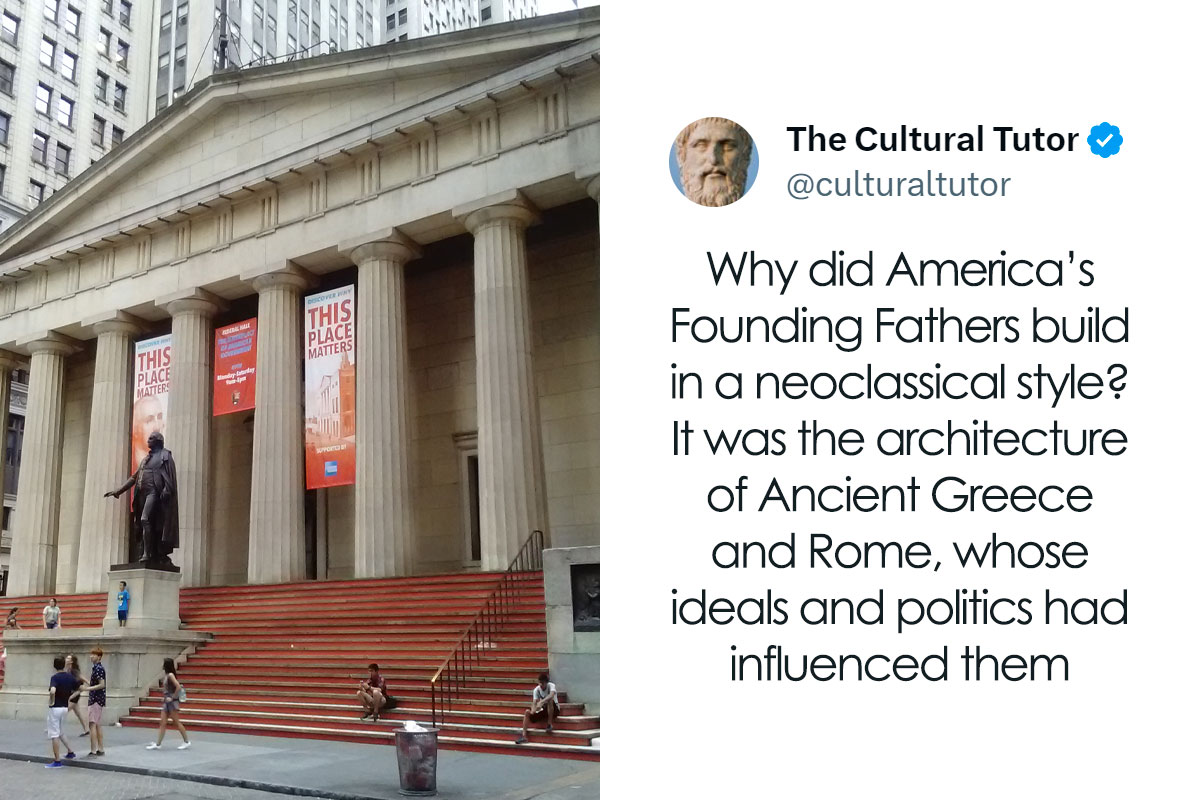
“Why Architecture Is Important”: X Account Explains The Significance Of Our Environments
You can tell a lot about a society and its culture by looking at its architecture. Our environments shape us, we shape them in turn, and the buildings that surround us echo the values that are (supposed to be) the most important to us.
‘The Cultural Tutor,’ a massively popular account on X (formerly Twitter), sparked an intriguing discussion on the social network by tackling the significance of architectural styles and what they say about us as people. You’ll find the full thread, as well as how people reacted to it, as you scroll down.
More info: X | CulturalTutor.com
The buildings that surround us can tell a lot about what society values the most
Image credits: culturaltutor
The Cultural Tutor, a massively popular account on X, explained exactly why architecture is so vital
Image credits: culturaltutor
Image credits: culturaltutor
Image credits: culturaltutor
Image credits: culturaltutor
Image credits: culturaltutor
Image credits: culturaltutor
Image credits: culturaltutor
Image credits: culturaltutor
Image credits: culturaltutor
Image credits: culturaltutor
Image credits: culturaltutor
Image credits: culturaltutor
Image credits: culturaltutor
Image credits: culturaltutor
Image credits: culturaltutor
Image credits: culturaltutor
Image credits: culturaltutor
Image credits: culturaltutor
Image credits: culturaltutor
Image credits: culturaltutor
It’s not just the types of buildings that are important. What’s also essential is how the area is planned out
Image credits: culturaltutor
Image credits: culturaltutor
Image credits: culturaltutor
You can discover a lot about a culture by studying its architecture in detail
The X account’s thread was a massive success and brought architecture as a topic into the lives of millions of people. At the time of writing, the thread was viewed 5 million times and had 41.7k likes. The account itself has 1.5 million loyal followers.
As ‘The Cultural Tutor’ stressed in their post, architectural style is more than just about aesthetics and appearance. Beyond those details lie cultural values, technological know-how, and what society as a whole prioritizes in terms of leisure.
Meanwhile, an area’s layout can reveal a lot about how much the local building projects were planned in advance versus where organic growth occurred.
According to the X account, architectural style is the physical expression of what a society believes and how it works. On top of that, it also shows who in society has the most power, and what’s most important to the people, and grants us insights into the role that culture, religion, and politics play there.
Public spaces are far more than just their aesthetics
During a previous interview with Bored Panda, an urban planning expert, from Sweden, shed some light on aesthetic standards in cities and the importance of the approach to designing public spaces.
“Most of the time, the elements of the built environment should be in harmony amidst each other and with the surroundings. However, sometimes, something bolder and out-of-the-box might form an engaging contrast,” she explained to us earlier. The urban planning expert added that built environments should engage people and stimulate their minds and senses, making them think.
“There are circumstances where the architecture should create a sense of calmness and safety, yet there are instances in which it is not bad if the architecture provokes us and makes us think, ‘Why don’t I like the look of this building?’” she said.
“Quirky architecture comes from our innate desire to demonstrate our uniqueness. However, not everyone who has the means has an average taste for aesthetics. Yet, as long as it is for the people who inhabit or use their private space, I mean why not? But, I think that we should not cross that thin line where architecture becomes reserved for only the wealthy and for those with ‘good taste’ (whoever decides that).”
According to the expert, there should be a consensus between the public and the professionals when designing public spaces.
“Even though I often advocate for unconventionally looking buildings, I do not encourage purposefully provocative architecture. The building should be designed with the intention to accommodate and protect society. It should create a sense of safety but not be boring,” she said.
“Also, I prefer somewhat complex but systemic designs. Minimalistic and box-like floor plans are good in some cases where easy access is necessary (for example, hospitals) yet they can be completely mind-numbing while more complex floor plan designs are more mind-stimulating (for example, good for schools, in my opinion).”
Well-designed buildings and spaces will balance form, as well as function
Good architectural design, at its core, is a mix of function and form. The buildings themselves need to meet the needs of the people living in the local area. They ought to create a comfortable and safe environment for everyone and be easy to navigate.
On top of that, the buildings also have to be aesthetically pleasing. Our environments can have a large impact on us and how we feel. Many people would probably prefer to live in an area that is beautiful and detailed rather than one that is completely bland and utilitarian.
On the flip side, building designs that are all style and no substance are also to be avoided. Just because the environment is beautiful doesn’t mean much if you can’t even sit down comfortably or if the space might not be wheelchair accessible.
Some architects are also able to weave eco-friendly design features into the projects, but this won’t happen everywhere. The focus on sustainability is a reflection of an architect’s personal values, as well as those of the public: different professionals working in different locations might make other values a priority.
For some more insightful posts from ‘The Cultural Tutor,’ be sure to check out Bored Panda’s previous features.
The thread received a lot of attention on social media. Here’s what some internet users had to say
Image credits: theLionary
Image credits: MadeGuyy
Image credits: sasha_in_space
Image credits: Thomasslabbers
Image credits: VENUS__6942
Image credits: krarunan
Image credits: khurshud
Image credits: AAMJ80671290
Image credits: SohoniSandeep
Image credits: DebbieKalata
Image credits: j_designedbyai
Image credits: GaKePe
I was brought up in West Yorkshire, England, in a village mentioned in the Domesday Book of William the Conqueror in 1086. Initially rural, it grew bigger with the woolen industry in the 1700's. There are rows of "weavers cottages" lined up in terraces up the sunny side of the steep valley. The top floor of each cottage was where the weavers loom was, so having the houses up the side of the valley meant they all got daylight, with no one blocking the sun-that meant good light all day for work. At the time, sheet glass/plate glass wasn't available, so the cottages have rows of tiny windows to maximise the light. All the weavers cottages are now listed buildings-they're a very distinct appearance, and even today, many new builds in the area are designed to mimic them.
Thanks so much for sharing this, Mabelbabel :)
Load More Replies...GREAT article! It got a little chaotic towards the end. But overall l loved all the info and pictures! This is such a huge topic of course. But this is a nice general intro to some of the things to think about regarding architecture.
Pretty sure the gothic building in the first picture isn't gothic.
Load More Replies...I really liked this article. BP editors, more like this please
Wow. Great article. One little thing bothered me and only because it's on a topic that has previously fascinated me: John Ruskin is simply wrong (or misleading) about church construction. Medieval churches were built over centuries, and so were designed by several generations of different people. What change labor made to the newer churches (18th/19th c) were that they were able to complete the church in a single generation, under the leadership of a single architect.
I have absolutely zero interest in architecture, and I enjoyed this. Thank you, BP. Good stuff.
Sasha is correct that Brutalism was cheap, but it's not that innocent. Brutalist architects weren't presented as inventive cost-cutters, but as revolutionarily brilliant artists. Had their hellish visions of nihilistic insanity and centrally planned straightjacketing of humanity been called cost-effective, the minions would have raged. Instead, every layer of elite society from the government to the art community to the educational establishment sold brutalism as freeing the human soul from enslaving ties to the past.
And it wasn't just architecture. The same was happening in the fine arts, science and in elite culture on the whole. Understandable, I suppose. Examining the buildings, divorced from the ideology, I think there is some really great brutalism. Unfortunately it was a style which was really easy to transpose into ugly, s****y apartment blocks etc. And then call them works of art for future living.
Load More Replies...More articles like this one, please! My favorite is Art Nouveau because I love how it appears organic, yet whimsical.
I like this instead of the classic "4000 reasons to hate America" or "aita for setting my girlfriend's dog on fire" or "2000 photos of how much our world sucks right now!"
Load More Replies...My childhood home was built in 1492, partly from old ship timbers. It gave me a sense of history and connection to the world that continues to this day. In other words, architecture and buildings influence us in profound ways. So always try to be in buildings that are interesting.
That 3rd pic example of brutalist architecture is the god-awful student union at Durham University. Ugly as sin and equally bleak inside. Heaven knows, I spent long enough in it to recognise it. Criminal that it ever got planning permission given that it's spitting distance from the UNESCO world heritage site of the Castle and Cathedral.
How many of these magnificent structures were built at the cost of hundreds of lives to please the gods in whose name humanity commits cruel atrocities? Better one factory than one cathedral.
I certainly miss Brick Expressionism here, but that may be a specific of that I live in such. A simple geometric brick, a rectangular simpleton of no artistic content, combined in patterns and arrangements to build ornamentary and outbowed structures and such. Sometimes including figurines, sometimes only geometric, but almost always - depending on angles - repoducable by Lego. Now, if THAT doesn't have some to it...
A fascinating article, and very interesting opinions. The only, tiny, fly in the ointment for me, though,was the predictable repetition of the claim that the Egyptian pyramids are tombs. They are not.
I was brought up in West Yorkshire, England, in a village mentioned in the Domesday Book of William the Conqueror in 1086. Initially rural, it grew bigger with the woolen industry in the 1700's. There are rows of "weavers cottages" lined up in terraces up the sunny side of the steep valley. The top floor of each cottage was where the weavers loom was, so having the houses up the side of the valley meant they all got daylight, with no one blocking the sun-that meant good light all day for work. At the time, sheet glass/plate glass wasn't available, so the cottages have rows of tiny windows to maximise the light. All the weavers cottages are now listed buildings-they're a very distinct appearance, and even today, many new builds in the area are designed to mimic them.
Thanks so much for sharing this, Mabelbabel :)
Load More Replies...GREAT article! It got a little chaotic towards the end. But overall l loved all the info and pictures! This is such a huge topic of course. But this is a nice general intro to some of the things to think about regarding architecture.
Pretty sure the gothic building in the first picture isn't gothic.
Load More Replies...I really liked this article. BP editors, more like this please
Wow. Great article. One little thing bothered me and only because it's on a topic that has previously fascinated me: John Ruskin is simply wrong (or misleading) about church construction. Medieval churches were built over centuries, and so were designed by several generations of different people. What change labor made to the newer churches (18th/19th c) were that they were able to complete the church in a single generation, under the leadership of a single architect.
I have absolutely zero interest in architecture, and I enjoyed this. Thank you, BP. Good stuff.
Sasha is correct that Brutalism was cheap, but it's not that innocent. Brutalist architects weren't presented as inventive cost-cutters, but as revolutionarily brilliant artists. Had their hellish visions of nihilistic insanity and centrally planned straightjacketing of humanity been called cost-effective, the minions would have raged. Instead, every layer of elite society from the government to the art community to the educational establishment sold brutalism as freeing the human soul from enslaving ties to the past.
And it wasn't just architecture. The same was happening in the fine arts, science and in elite culture on the whole. Understandable, I suppose. Examining the buildings, divorced from the ideology, I think there is some really great brutalism. Unfortunately it was a style which was really easy to transpose into ugly, s****y apartment blocks etc. And then call them works of art for future living.
Load More Replies...More articles like this one, please! My favorite is Art Nouveau because I love how it appears organic, yet whimsical.
I like this instead of the classic "4000 reasons to hate America" or "aita for setting my girlfriend's dog on fire" or "2000 photos of how much our world sucks right now!"
Load More Replies...My childhood home was built in 1492, partly from old ship timbers. It gave me a sense of history and connection to the world that continues to this day. In other words, architecture and buildings influence us in profound ways. So always try to be in buildings that are interesting.
That 3rd pic example of brutalist architecture is the god-awful student union at Durham University. Ugly as sin and equally bleak inside. Heaven knows, I spent long enough in it to recognise it. Criminal that it ever got planning permission given that it's spitting distance from the UNESCO world heritage site of the Castle and Cathedral.
How many of these magnificent structures were built at the cost of hundreds of lives to please the gods in whose name humanity commits cruel atrocities? Better one factory than one cathedral.
I certainly miss Brick Expressionism here, but that may be a specific of that I live in such. A simple geometric brick, a rectangular simpleton of no artistic content, combined in patterns and arrangements to build ornamentary and outbowed structures and such. Sometimes including figurines, sometimes only geometric, but almost always - depending on angles - repoducable by Lego. Now, if THAT doesn't have some to it...
A fascinating article, and very interesting opinions. The only, tiny, fly in the ointment for me, though,was the predictable repetition of the claim that the Egyptian pyramids are tombs. They are not.
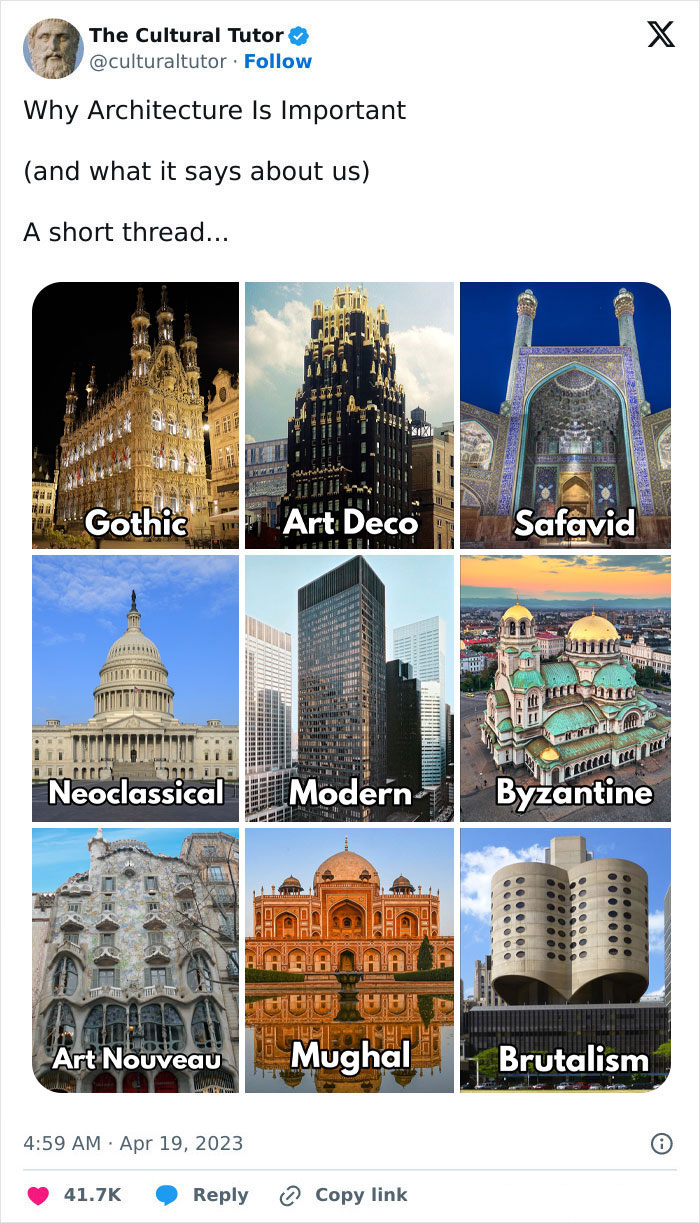
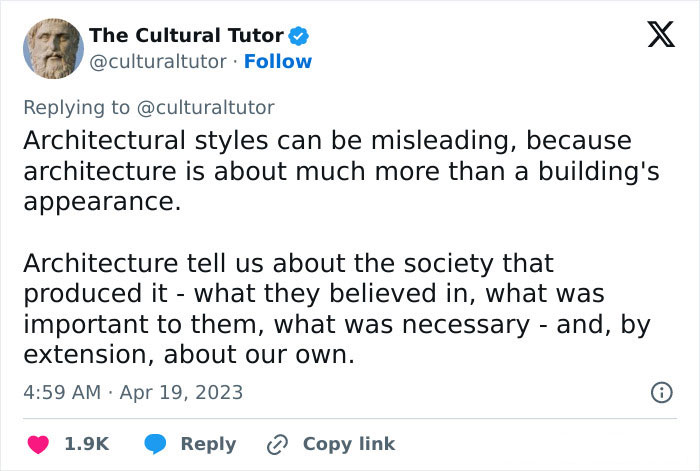
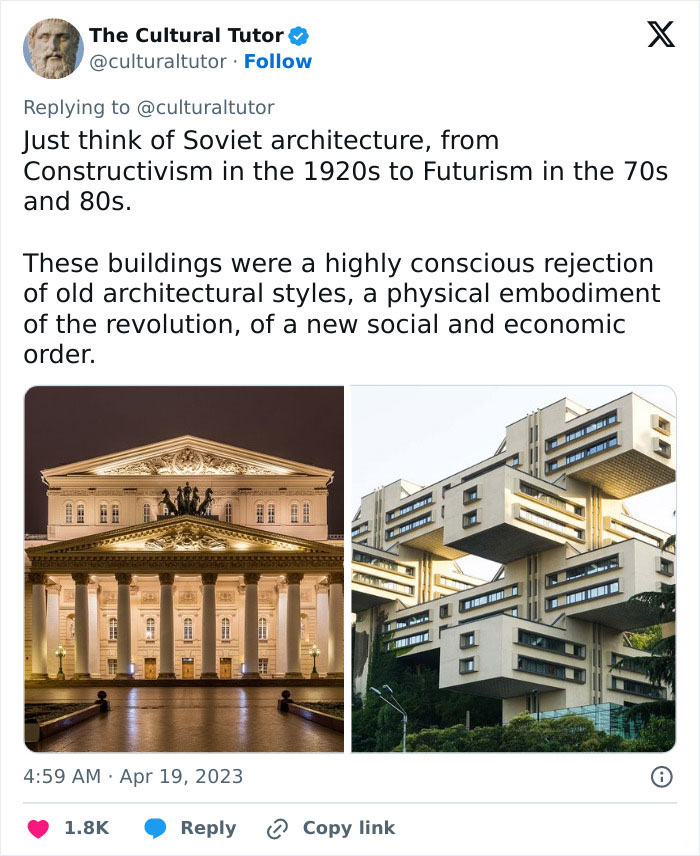
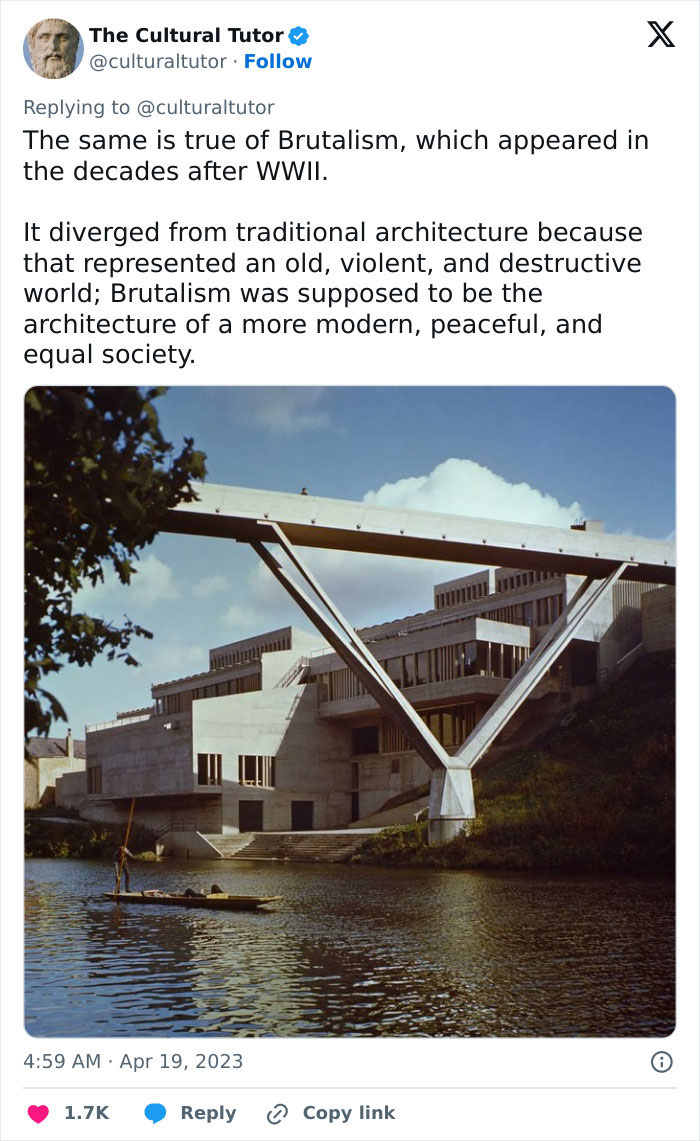
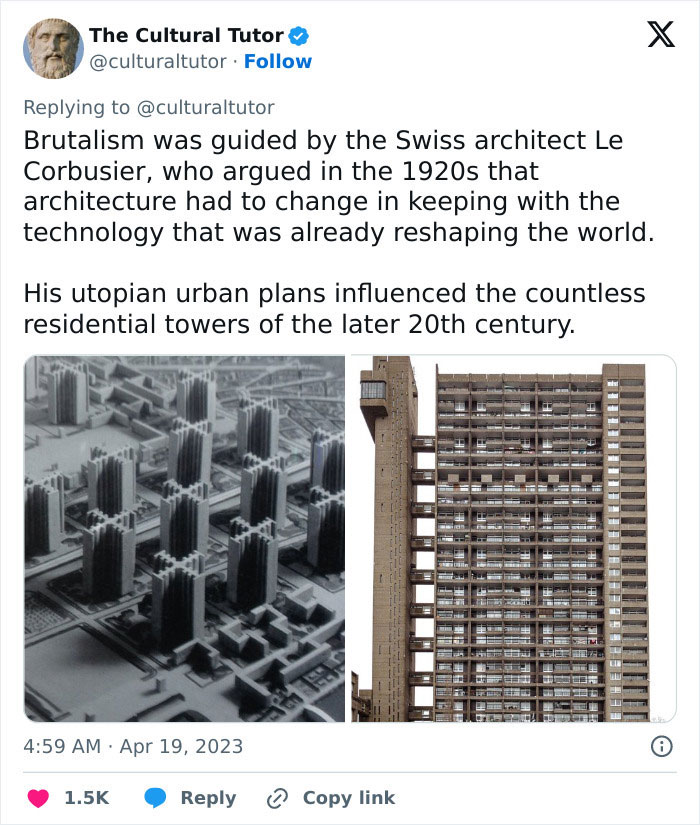
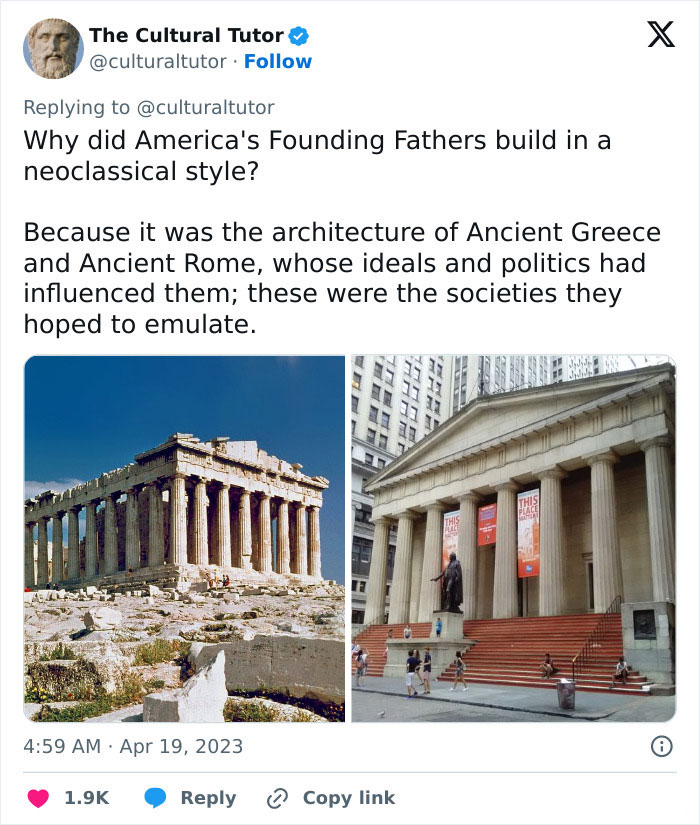
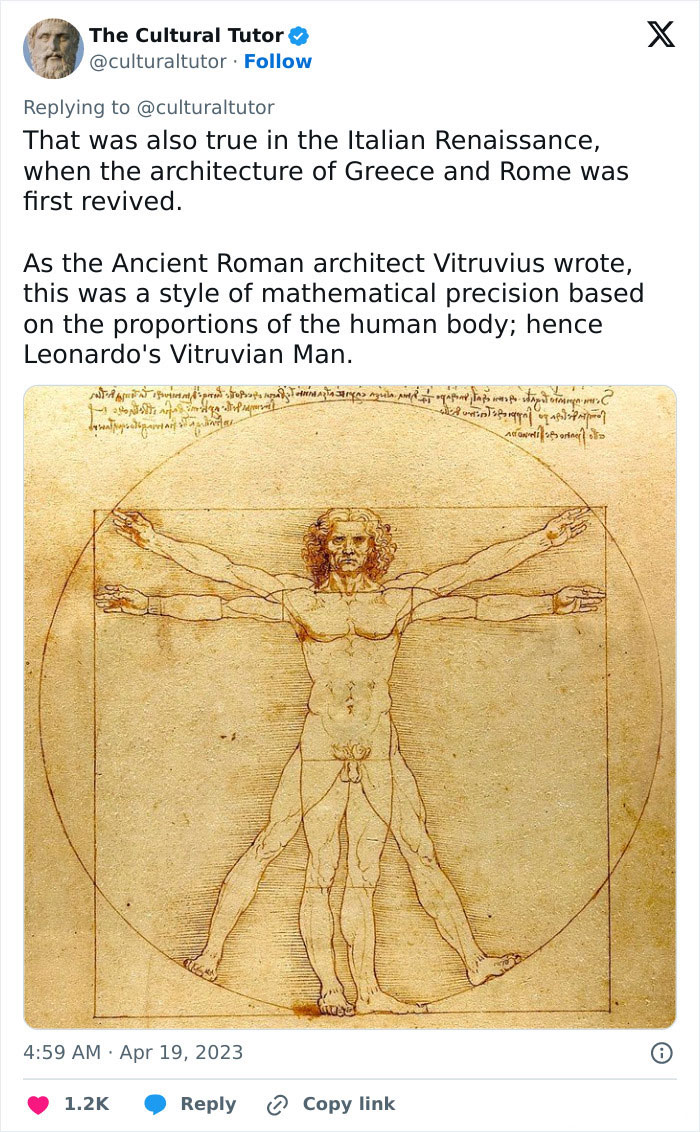
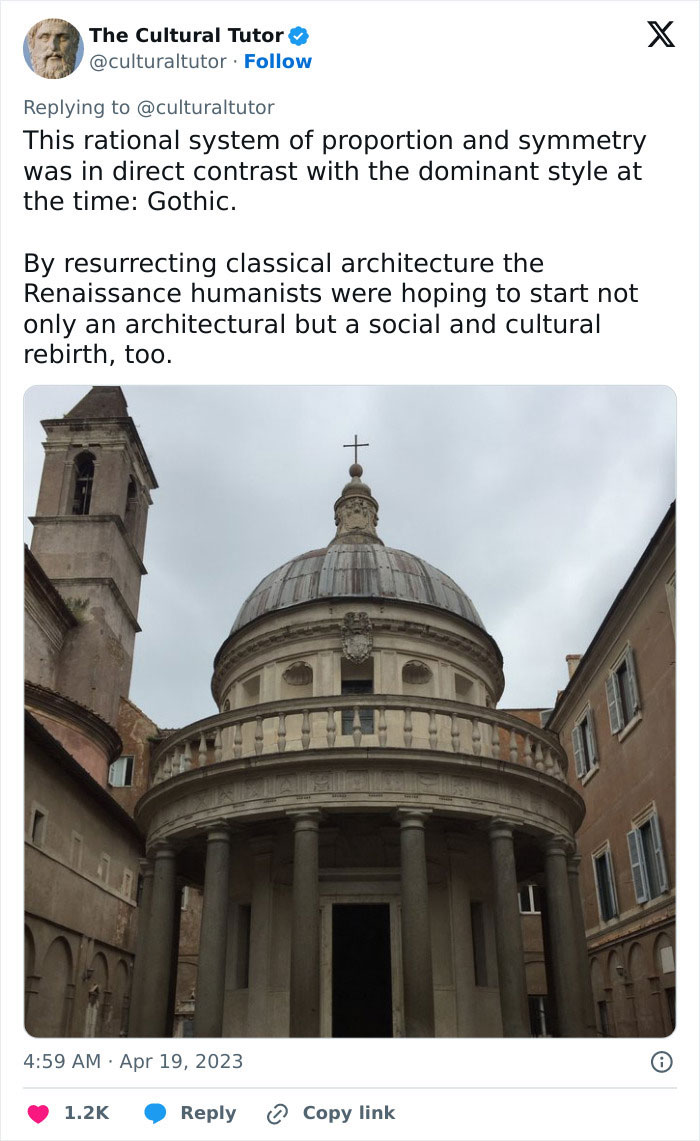
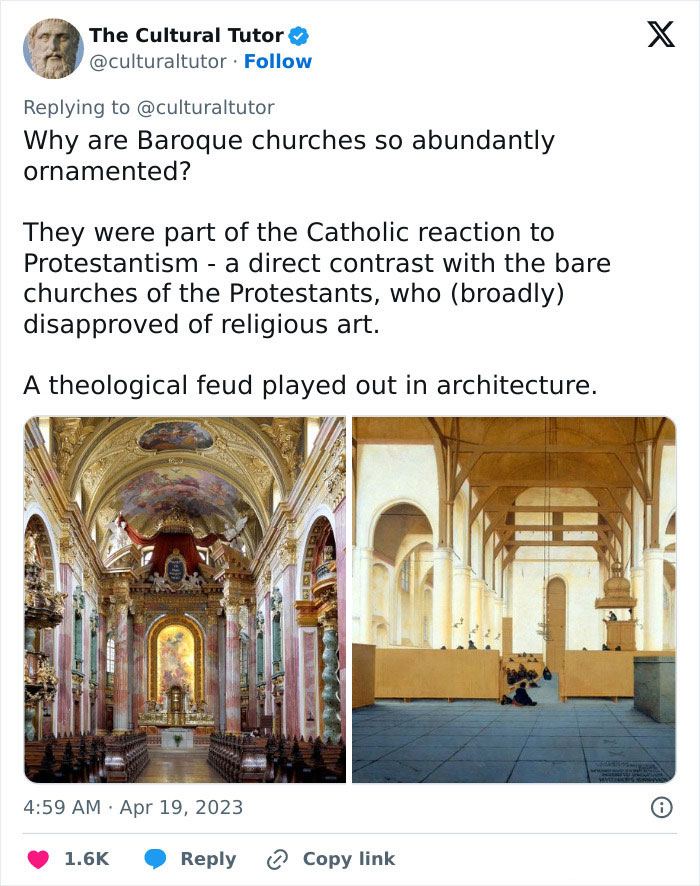
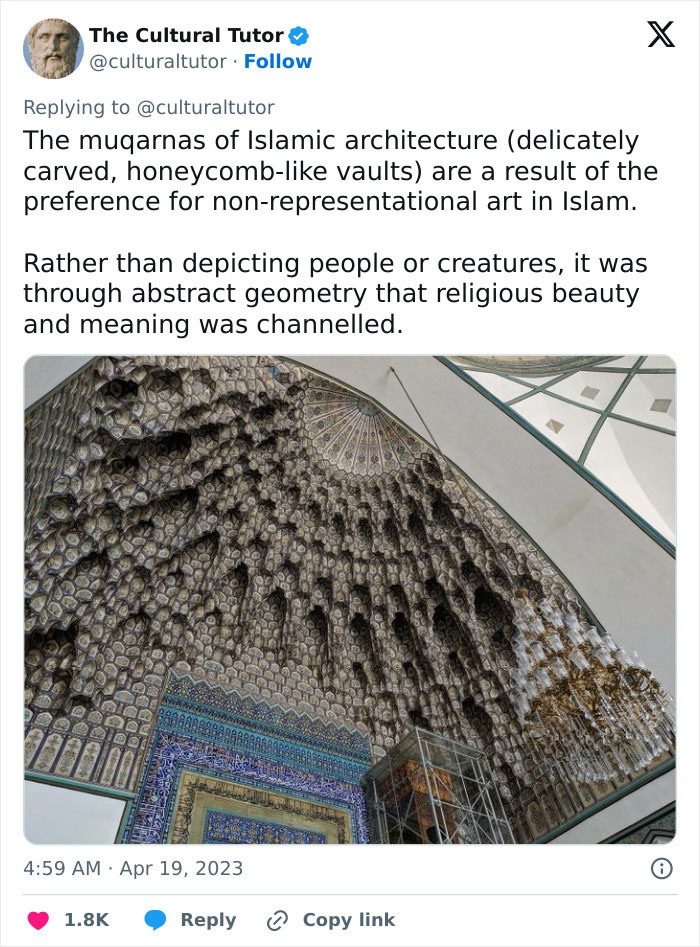
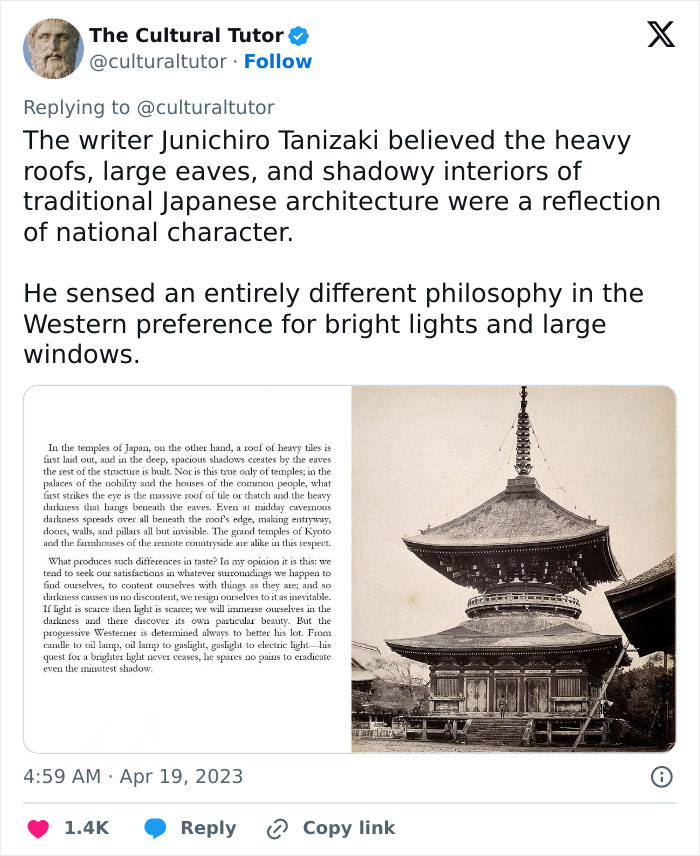
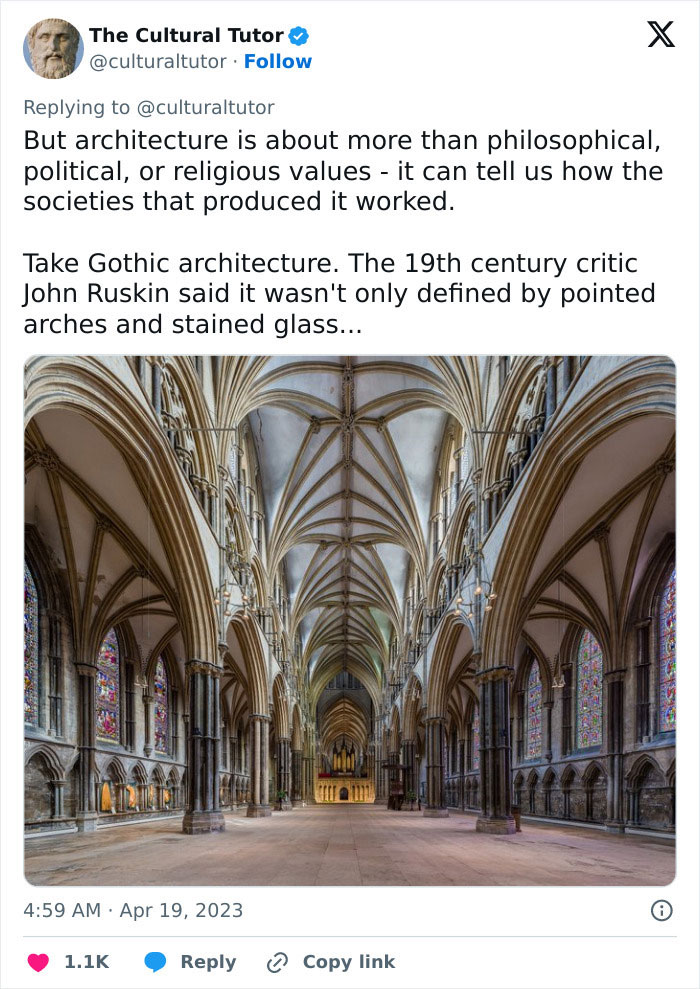
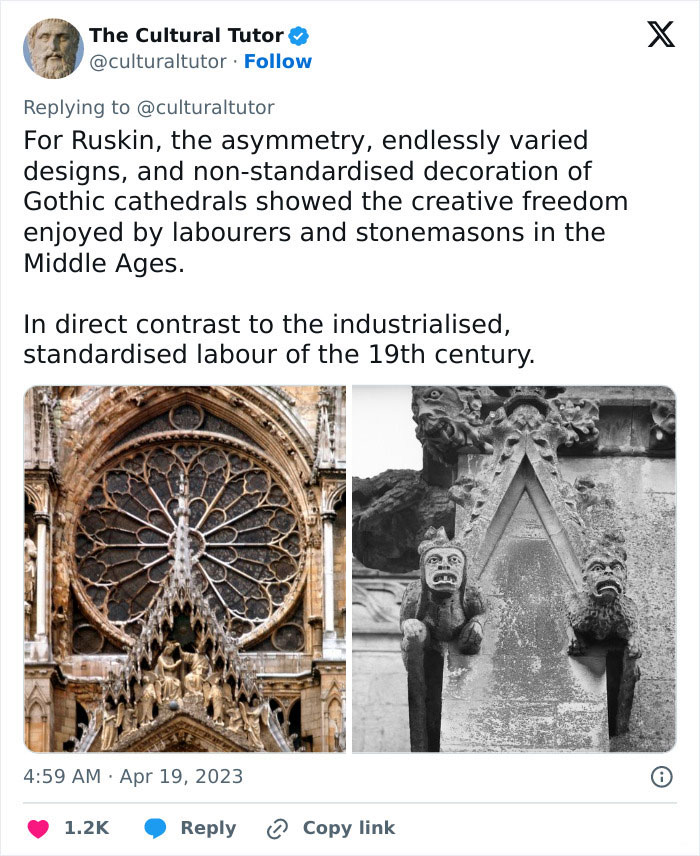
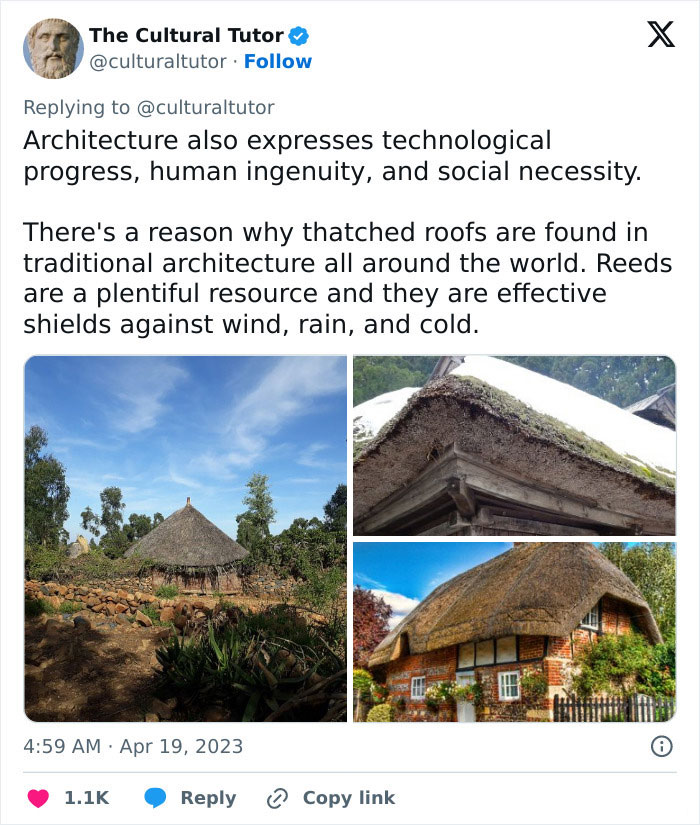
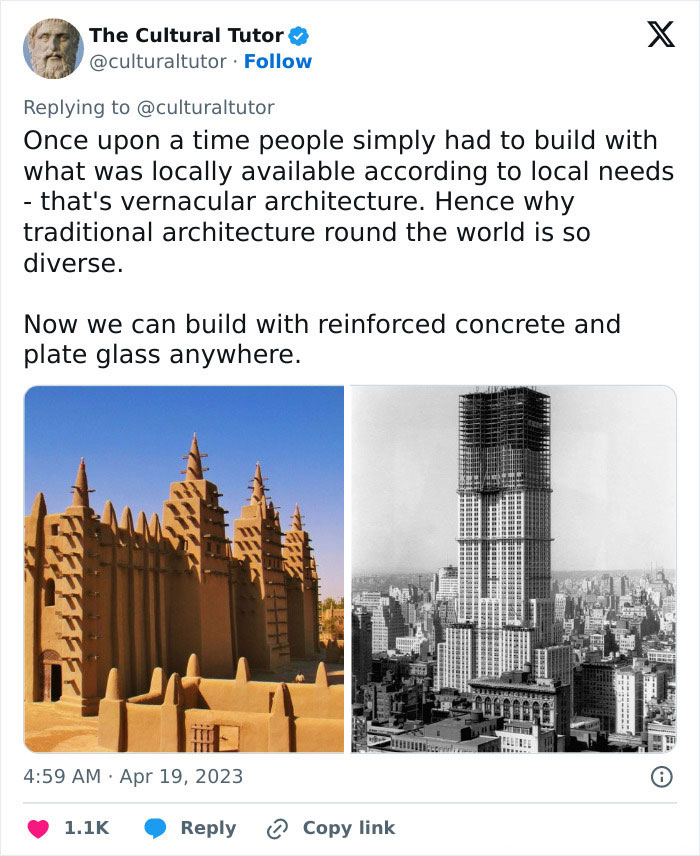
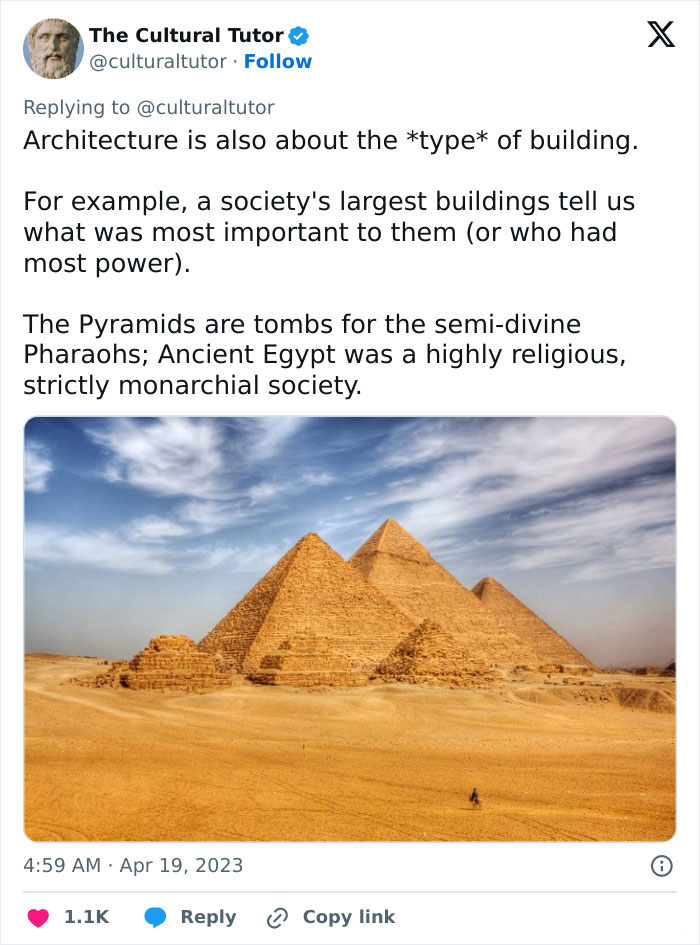
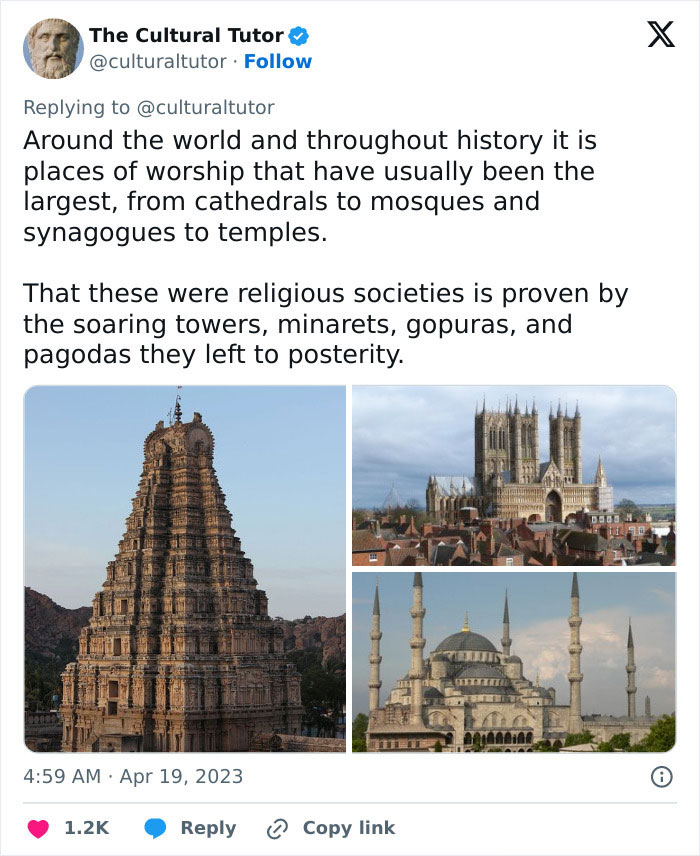
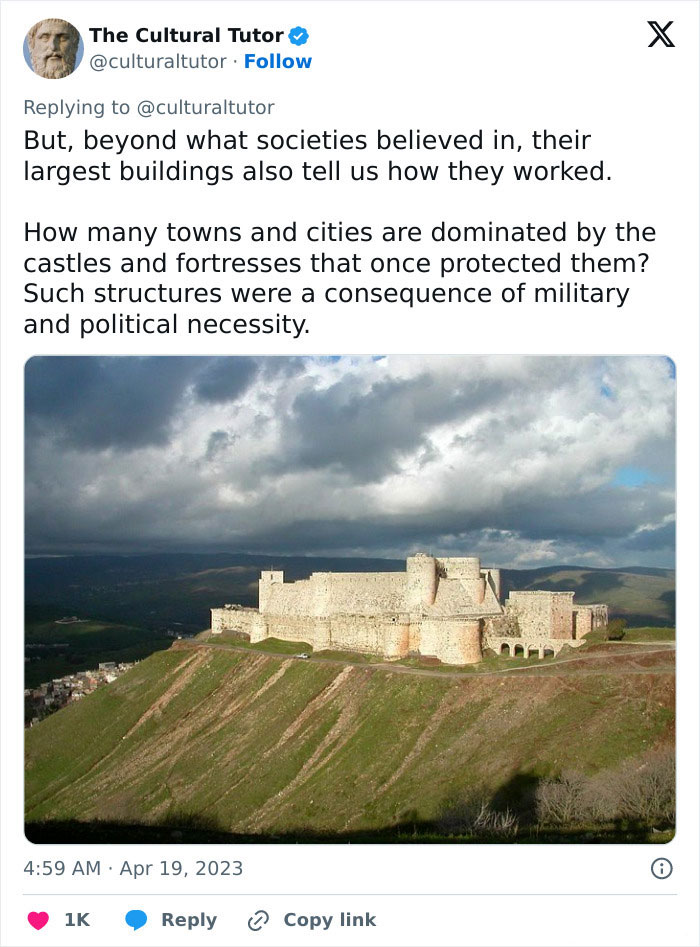
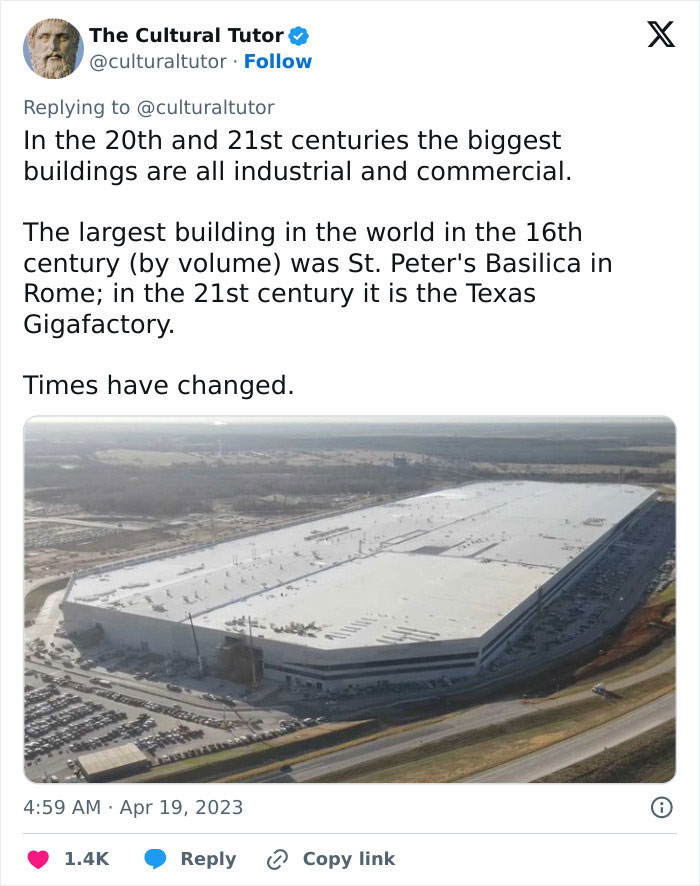
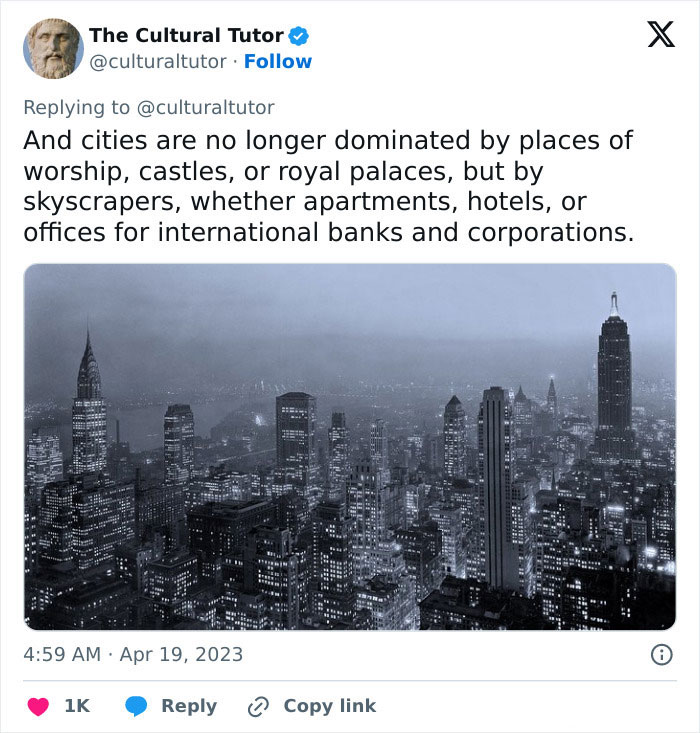
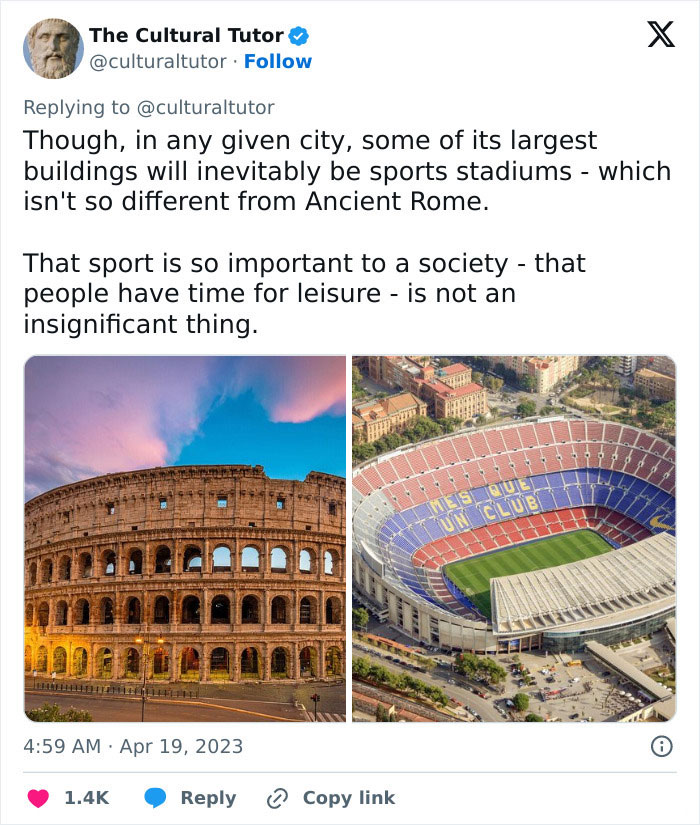
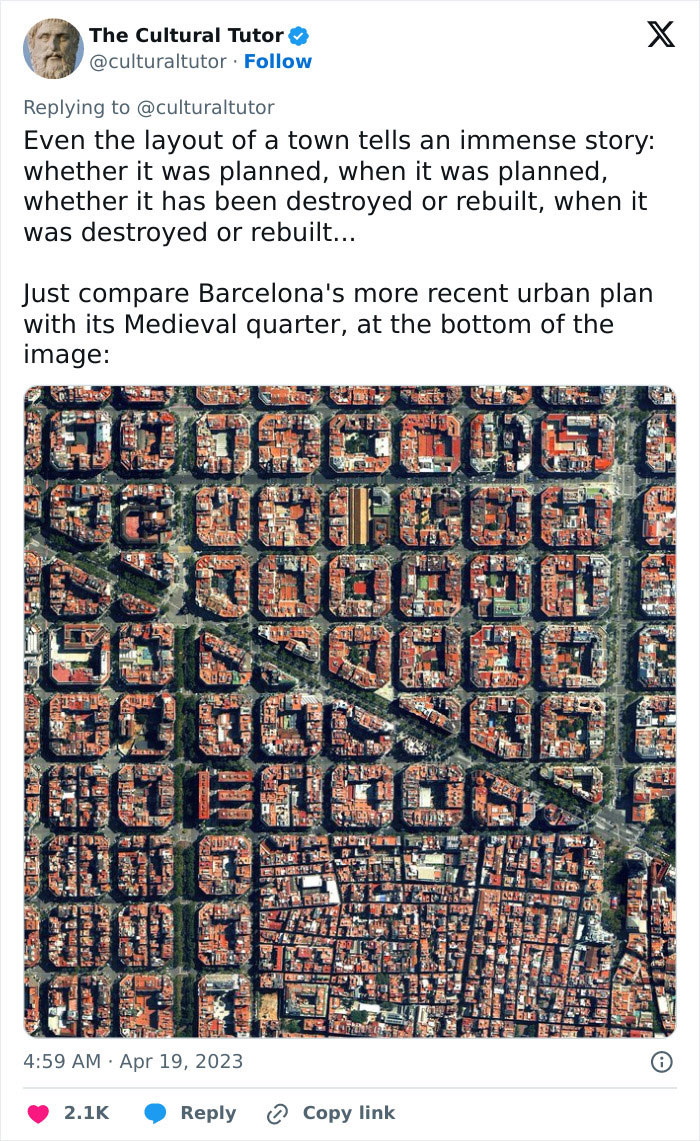
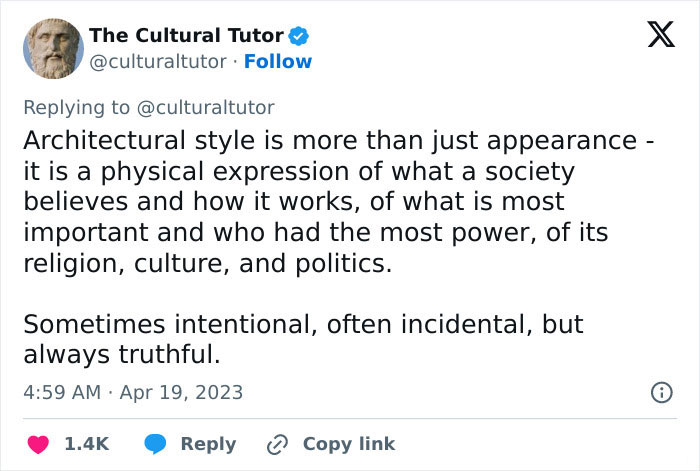
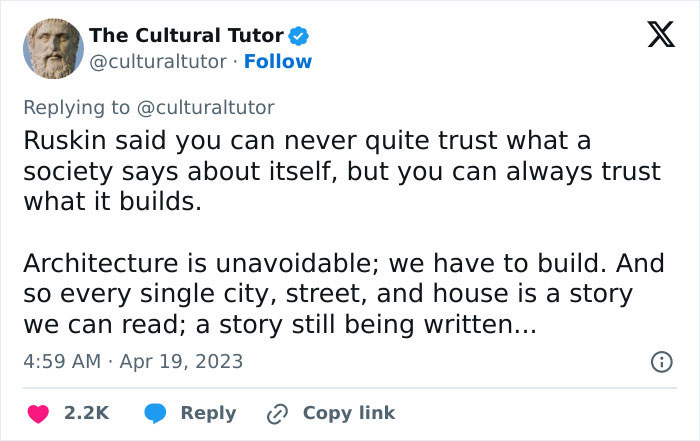
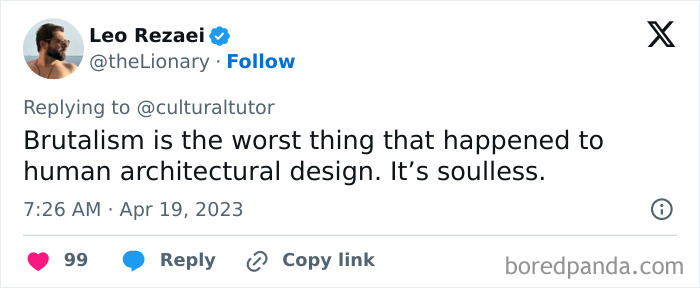
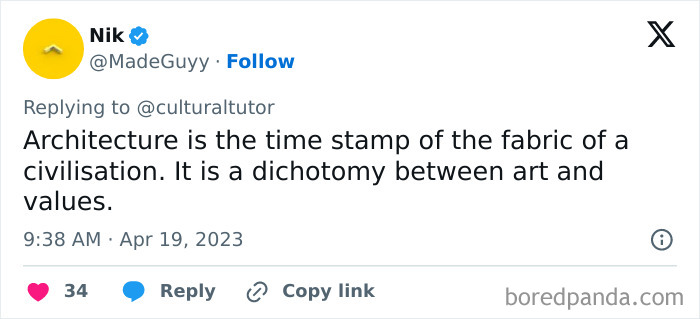
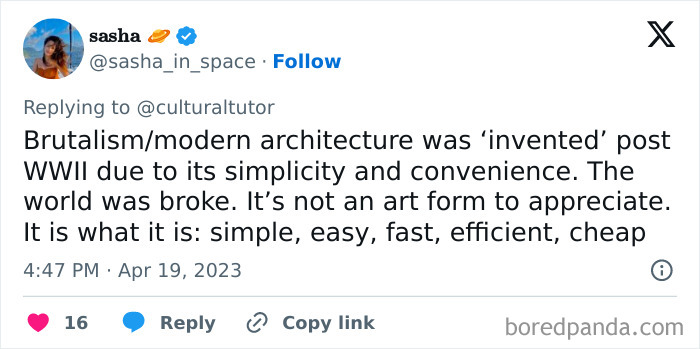

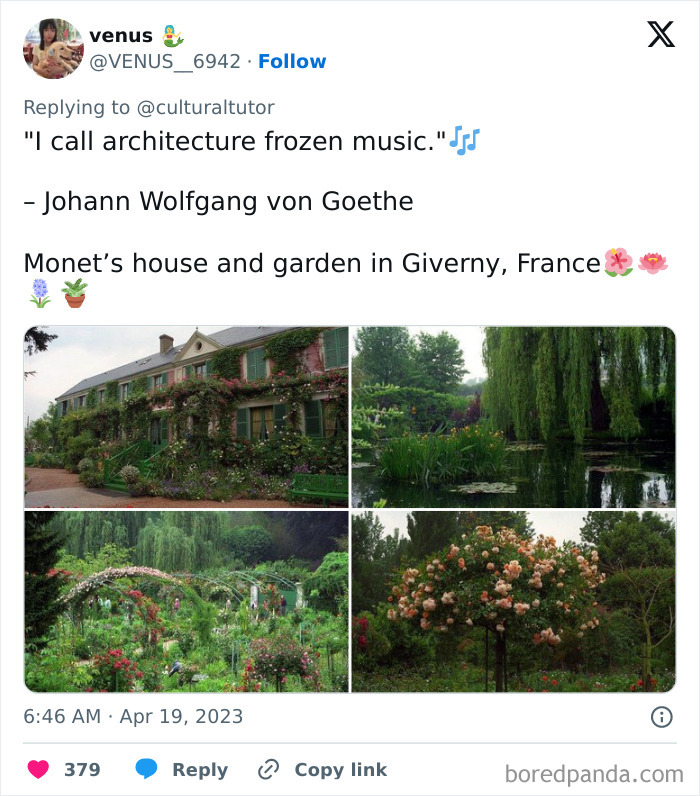
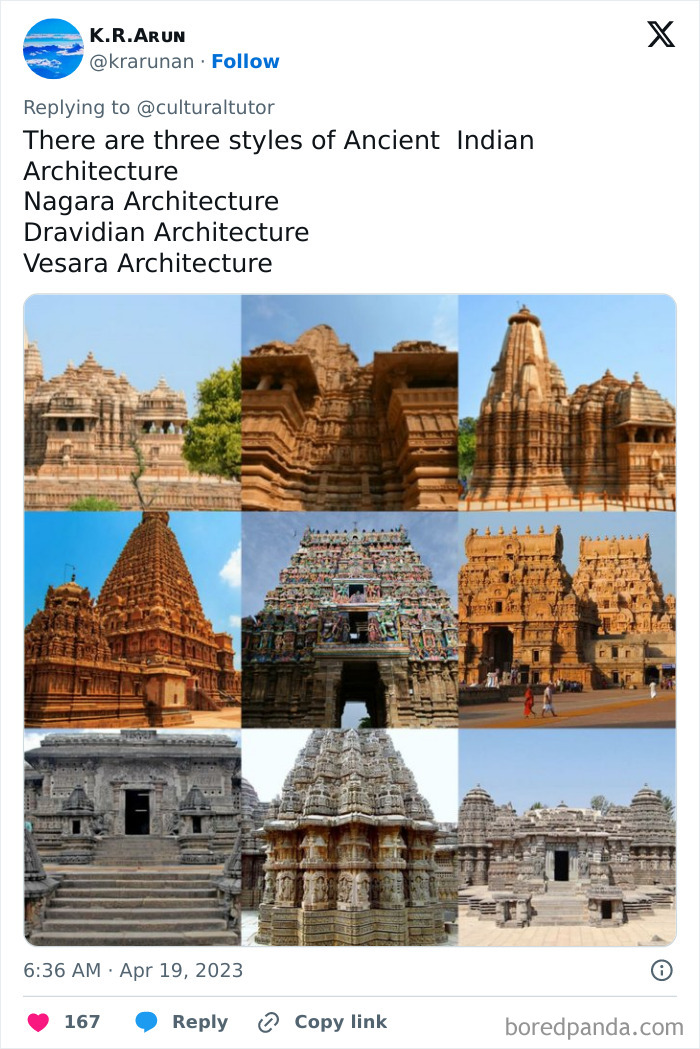
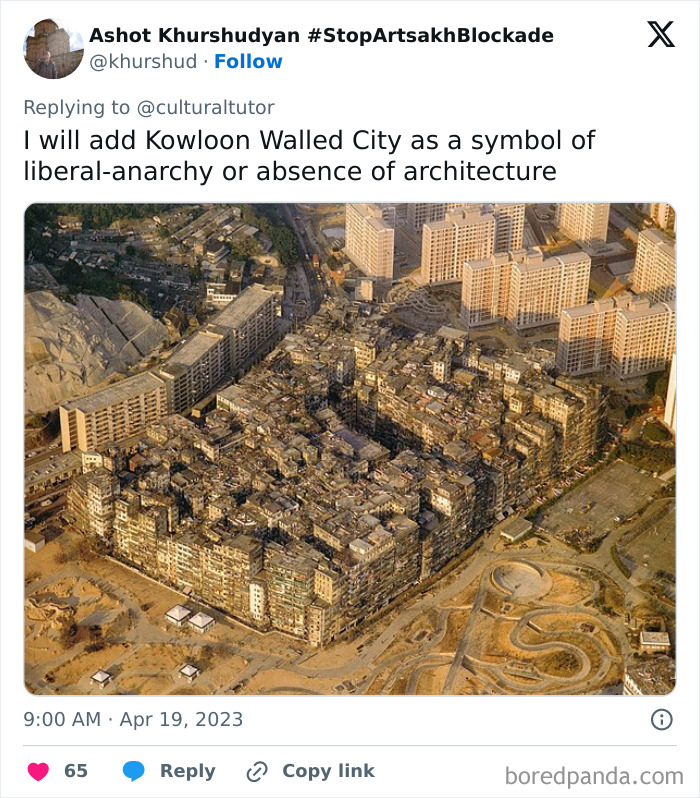
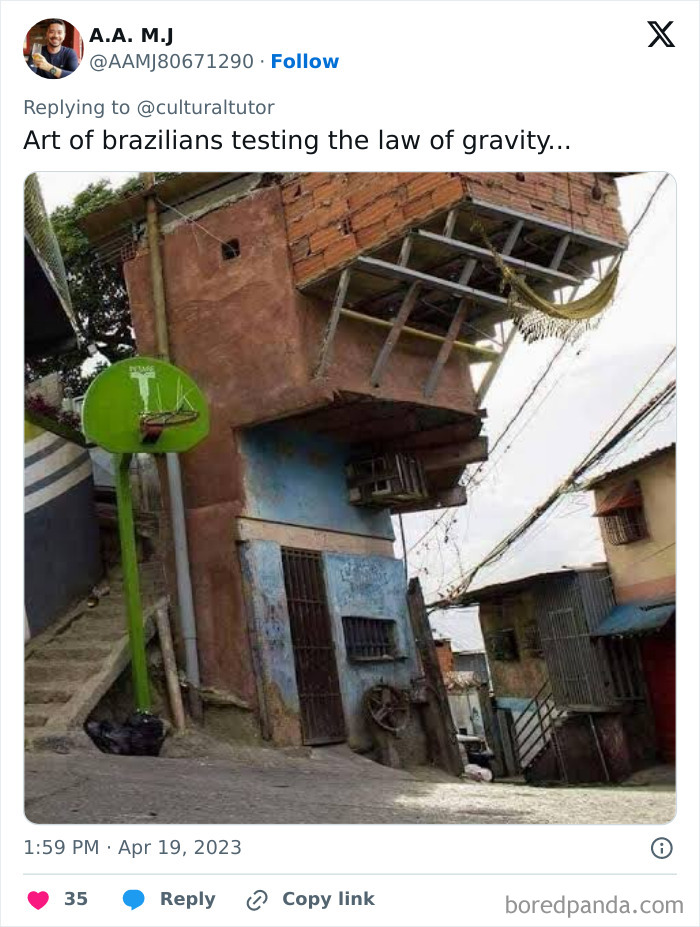
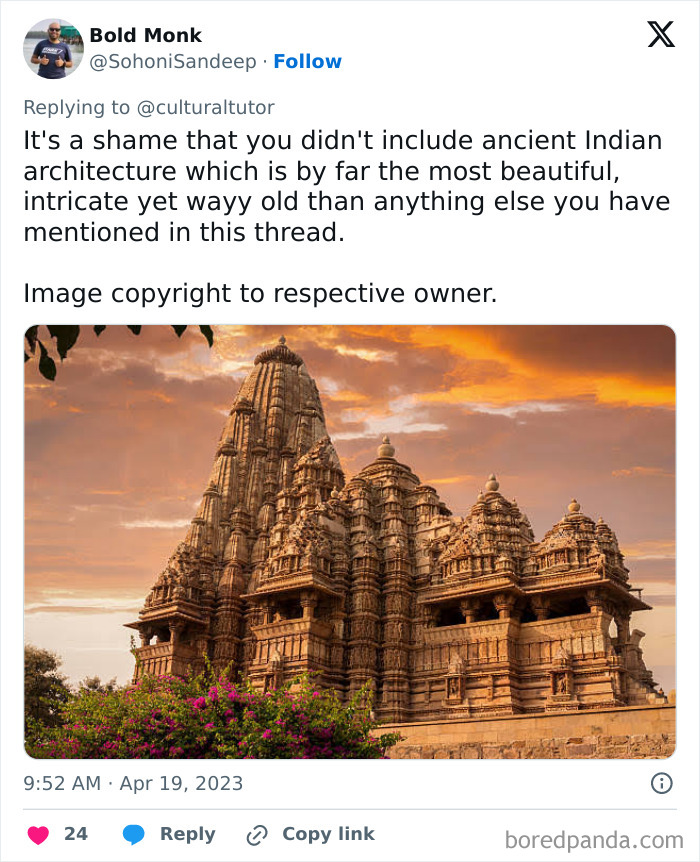
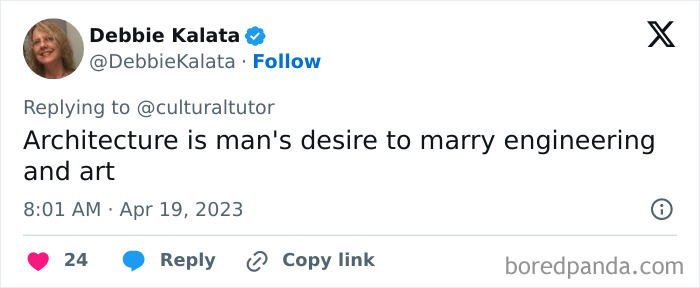
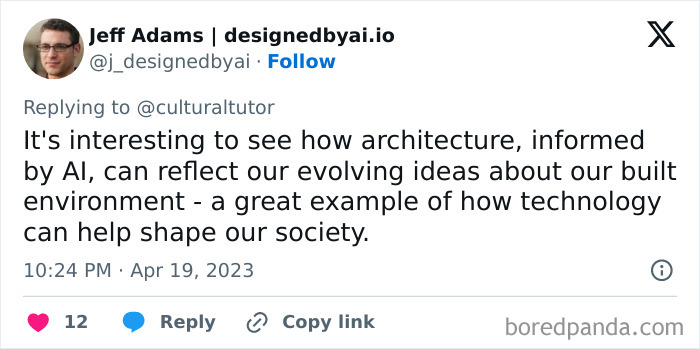
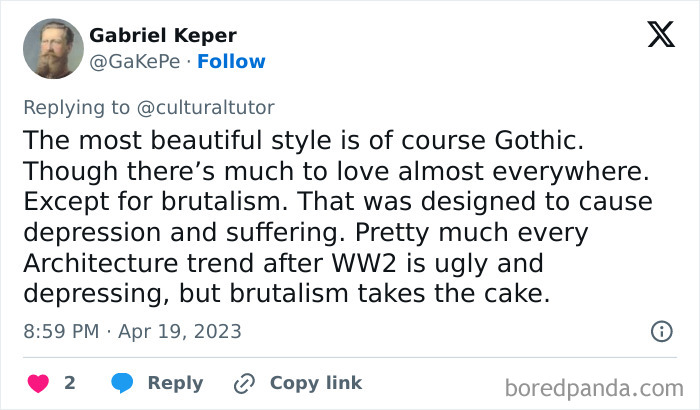




103
28